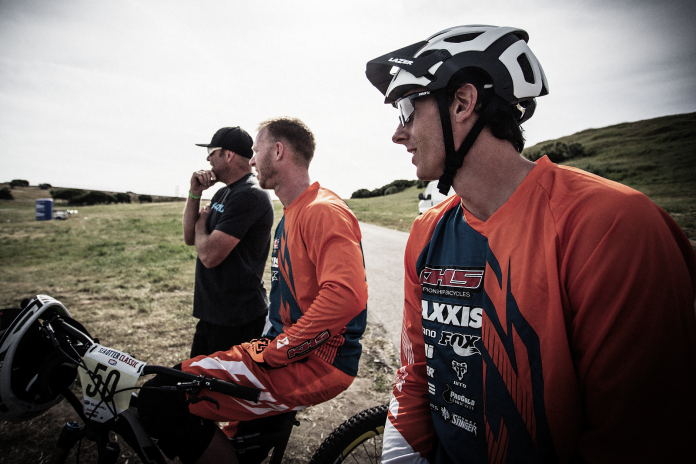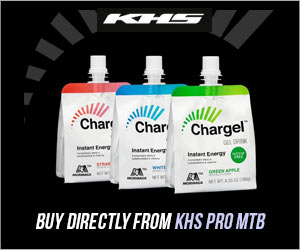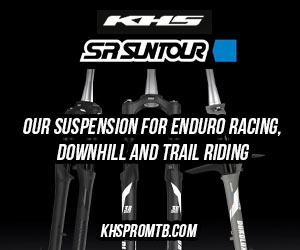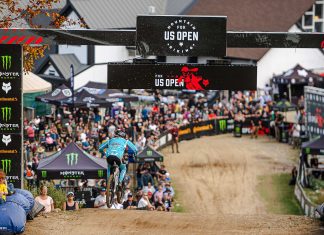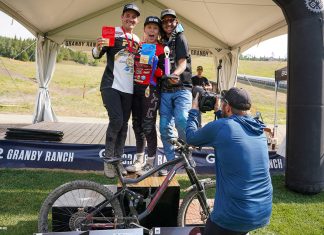Mountain biking is a dynamic, multi-faceted cycling discipline. Depending on your skill level and where you live, it can mean very different things to different people. Some people prefer a casual pedal down a dirt path or fire road, while others consider flying down post ski-season resort mountains their cup-of-tea. And most of us… we fall somewhere in the middle, enjoying the spectrum of what mountain biking has to offer.
Whether you are an MTB racer or weekend warrior, there is one term that you have probably heard thrown around a lot over the past few years: Enduro.
Enduro is a form of mountain bike racing, but you will also hear “enduro” used as an adjective to describe a certain trail, bike, piece of mountain biking equipment or clothing. When used as an adjective, the person is comparing what he/she is talking about to something that you would see or find in an enduro racing event.
Enduro mountain bike racing started out in Europe with influence from car rally racing and motorbike enduro racing. The concept was simple: get yourself to the top of a mountain and race to the bottom time-trial style.
In general, modern enduro races involve anywhere from 3-6 timed stages. The timed portions of the race are mostly downhill but can vary in steepness, length, and difficulty depending on location. Between each stage, there will be untimed “transfer stages” that are mostly uphill. Depending on the race, transfer stages can involve sections of hike-a-bike, a chair lift, and/or good old-fashioned pedaling.
Enduro combines elements of all racing disciplines from the physical fitness necessary for cross-country racing, the mental stamina necessary for XC-style stage races and the bike-handling skills to navigate technical gravity-fed singletrack.
You’ll find out that each enduro race has a different style, fitness and skill requirement – and, often, a set of rules unique to each event. For example, some races just require that you cross the finish line of the last stage by a certain time in the day to get your name in the results. Other races have a time limit for each transition stage.
But for the most part, enduro is meant to be a fun, approachable and exciting form of mountain biking.

Is Enduro Only for the Professionals?
The answer is no!
While enduro does require some physical fitness and skill to complete the course, it is one of the most approachable disciplines for an amateur rider. Here are a few reasons why enduro is awesome for all levels of riders:
- When racing on timed stages, it is just you, your bike and the clock. There isn’t much worry about having to pass or get passed, because you are sent off down the trail at 30 second – 1 minute intervals. If you do get passed (or need to pass someone), it is usually just one person at a time, which is much easier to handle than a whole group of riders in an XC race.
- Men, women, pro, amateur; everyone rides the same course! So, regardless of your classification, you can compare your times to everyone else.
- It is totally normal to carry a pack around. In a lot of other racing formats you will be scoffed at for carrying a bag, but in enduro, it is often necessary. If you get a flat or other mechanical, you’re responsible. And, who doesn’t love the opportunity for snacking? Transition stages give you the opportunity to catch your breath, stretch out… and… eat!
- It is basically a motivated trail ride! Think of enduro as a ride you would normally love to do… just with a bunch of new friends and a little more motivation to push your limits on the descents.
- The people are amazing. More than any other form of racing, enduro is known for having a friendly atmosphere. Wait for your buddies to finish the timed stage runs and then ride to the top together. And of course, celebrate with new and old friends at the finish line with race talk, good food and a tasty beverage.

What Bike Should I Ride?
Unlike downhill racing, a dedicated bike is not required for enduro. The same set of wheels you pedal at your local trails will likely do the trick. Here are a few things to consider:
- You’ll want a bike that you can ride up and down hills all day! So, if you aren’t comfortable riding the local trails for a couple hours, you’re not going to be comfortable racing enduro on that rig!
- While you could race an enduro on a hardtail, you’ll probably find that you feel more confident on a full suspension bike. Consider the terrain that you will be riding on. If you are participating in a local enduro without much elevation change, you could opt for a bike with less travel 100-140 mm of front and rear suspension, like the KHS 3500 or the KHS 6500. If the trails are steep, and technical, you’ll want a bike with a bit more squish such as 140- 160 mm of travel, like the KHS 7500.
- Brakes, tire selection and gearing are also important things to consider when deciding on the best bike for enduro racing. If you will be doing a lot of steep descending, larger brake rotors will help disseminate the heat and provide more power for longer periods of time. Are the trails muddy, rocky, loose, or hard packed? Researching trail conditions will help you make an informed tire selection decision. Generally, tires with tougher sidewalls will minimize your chances of having to repair a flat tire on the trail. Since enduro covers the spectrum from steep and fast descents to long and technical uphills, you’ll need a wide gear selection. Along with that, chain guides are a great idea for those rough downhills!
- Dropper seat posts? Yes please! While not a necessary, this little addition will definitely come in handy for an enduro race. In many enduro stages, the trail will fluctuate between steep downhill and flatter sections where you’ll want to catch a pedal or two. Having a dropper post will allow you to get the saddle out of the way so you can easily change your body position over challenging terrain and quickly return it to pedaling position so you can rest while maintaining your momentum.

What Should I Wear?
The gear you wear and carry will ultimately be determined by the conditions of the particular enduro you are racing. You may want to consider these items on race day:
- A full face helmet. Some enduro races require them, some do not. But one thing is for sure: you are required to wear some type of helmet at all times (even on the climbs). So, take into consideration the weather (if it is super hot, are you going to want to wear a full face helmet while climbing) and the terrain (although crashes could happen on any terrain, consider the steepness and amount of technical features on the course). Many riders carry a pack that allows them to strap on an extra helmet – riding uphill toting your full face on your back and racing each stage with a lightweight trail helmet securely strapped in.
- Pads. Keeping your extremities (like knees, shins, and elbows) protected is always a good idea.
- Long sleeves and baggy shorts. Yeah, you could totally race enduro in your skin suit… but the more clothing you have on, the more protected you’re going to be should you have a fall.
- Hydration pack. While you may not see the top pros sporting a pack during an Enduro World Series race, this item is a necessity for most enduros. Don’t pack the kitchen sink, but do bring basic fix-a-flat tools, your phone, food, and enough water to last you the day.
- Eyewear. Protect your eyeballs! Goggles or cycling glasses are an important part of your enduro kit. Not only will eyewear protect you from flying mud and debris, it will also ensure you can see as you fly down the trail!

We also have a wide variety of Enduro Bikes to choose from. Our bikes are engineered and designed with only one thing in mind: FAST!
[ess_grid alias=”enduro slider”]
